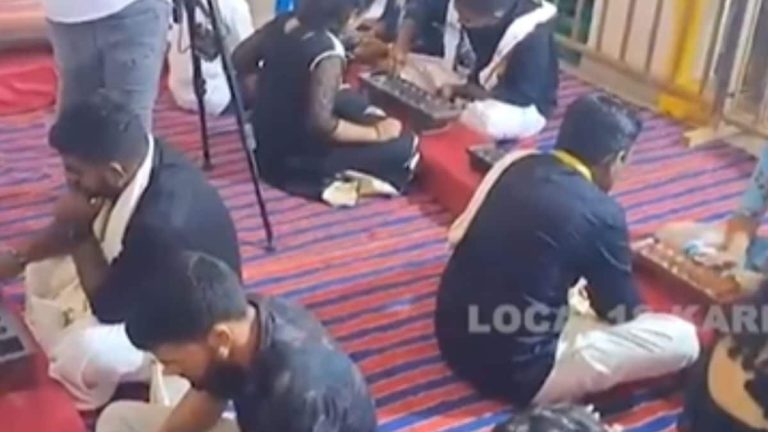Last updated:

Mane is the Tulu word for wooden board, which is rectangular.
Playing for a few hours is a great way for families to bond with each other.
Chennemane or Chenneda Mane is a popular indoor game in Turunadu region during the month of Ati. This game is a symbol of Tulunadu culture and heritage. It's fun for all ages from 3 to 100 years old. Playing for a few hours is a great way for families to bond with each other. It is believed that this game should not be played between a husband and wife or between two sisters as it can lead to quarrels.
The beauty of this game is not only its entertainment value, but it also improves IQ as it has some features of the popular chess game. It is the embodiment of the ruler's supremacy in society. The system of tenancy using the property of the king or landowners shows the early imbalance of political, social and economic power.
Mane is the Tulu word for wooden board, which is rectangular. The design of the plates (bristle) varies from place to place. There are no standard measurements for mane. The game is played using the seeds of local trees such as pongar, coral tree or manjottikai gulagunji. Usually, it is called “chennedakai” or “bithu” in local languages. Manjottikai are abundant in resources and are the most commonly used seeds in the game. Fifty-six seeds are required for the tournament.
This game shows how closely the Tulunadu people are connected to agriculture. Since it rains heavily during Ati, there is not much to do in the fields, so people prefer to play games indoors. Many terms used in the game are related to farming. For example, “bule perga” (yield) and “muguli” (three seeds) refer to the green shoots of the plant.
Traditionally, Chennemane is played after drinking “Metteda Ganji” or “Paale Kasaya” on the full moon day of the month of Ati. The game continues till Krishnastami. The mane is then retained and removed only on the next arti. Most commoners' manes were made of wood, while the kings of the region had theirs made of gold or silver.
Chennemane can be played in 40 different ways. The most common variations are “Bule Perga” (played between two persons) and “Arasu Aate” (played between three persons – Aarasu (king), Pradaane (minister) and Geni (tenant)).
There is also a “Seete Aata” that can only be played by one person. This is a never-ending game. This is said to be a game played by Goddess Sita while she was waiting for Lord Rama. In this way, the game has different variants namely Joduperga, Kodillkatta, Mantriata, Ajjinakar, Katari, Mata, Ekkadi, Kompalachenne, Anchil-Bachil, ArateMukve and ErateKatte.
